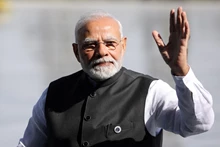
Telangana is likely to rejoin Pradhan Mantri Fasal Bima Yojana after withdrawing from it due to the "highest cost of premium subsidy."
According to sources, the Telangana government's demand for "universal coverage" of farmers under the scheme was accepted by the Centre.
Telangana is likely to implement PMFBY from Rabi 2023.
Six states—Andhra Pradesh, Telangana, Bihar, Jharkhand, West Bengal, and Gujarat left the scheme, claiming the high cost of premiums as the reason. As a result, their share of the premium subsidy was released later than expected. Insurance companies had trouble settling claims as a result of delayed insurance premiums.
After the Center accepted the state government's proposal to make the PMFBY available to all farmers, the government of Andhra Pradesh stated earlier this month that it would rejoin the scheme, effective with the Kharif 2022.
Telangana government took longer than expected to release its share of the premium under the PMFBY in 2018–19 and 2019–20, which caused the Center to stop the distribution of its share of the matching sum, delaying the settlement of the farmers' claims. After that, starting with the 2020 Kharif season, the Telangana government discontinued enforcing the PMFBY.
According to the updated PMFBY guidelines published as of Kharif 2020, the Centre had stipulated that in case of non-payment of the state’s share of the premium, subsidy within the prescribed timelines would lead to disqualification of the state government from implementing crop insurance from the next season.
The premium that farmers must pay under the substantially subsidized PMFBY is only 1.5% of the sum insured for rabi crops and 2 percent for Kharif crops, while it is 5% for cash crops. In the case of the northeastern states, the premium is divided between the Center and states in a ratio of 9:1, while the remaining premium is distributed equally between the Center and states.
Farmers' claims under the PMFBY have been declining in recent years. According to preliminary data, the ratio, which was 93.9% in the Kharif of 2018, has decreased to just 41.9% in the Kharif of 2021. The claim to premium ratio was 106.9% in rabi 2017, and it dropped to 47.1% in 2021.
In February 2020, the government made the PMFBY voluntary for farmers; previously, it was mandatory for farmers to take insurance cover under the scheme.
Presently, 21 states and union territories are using the scheme. Since its launch in 2016, the PMFBY has not been embraced by the Punjab government.
There are around 140 million farmer families in the country, according to estimates from the ministry of agriculture. In the past three years, enrolment under the PMFBY has not surpassed 20 million.
In an attempt to bring more people into the scheme, a working group formed by the ministry of agriculture and farmers' welfare to examine the PMFBY has recommended raising the claim-premium cap from the current 110% to 130%.
According to a working group analysis, the PMFBY premium has climbed by more than six times since 2016, which has increased the government's subsidy liability.









